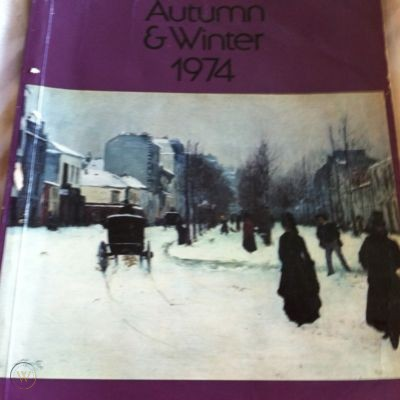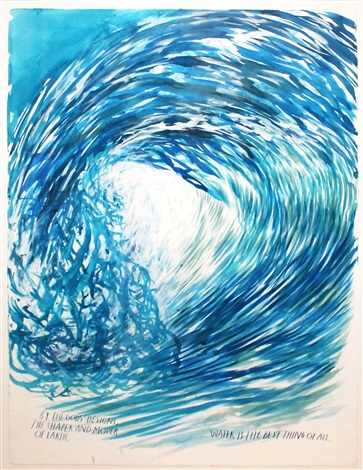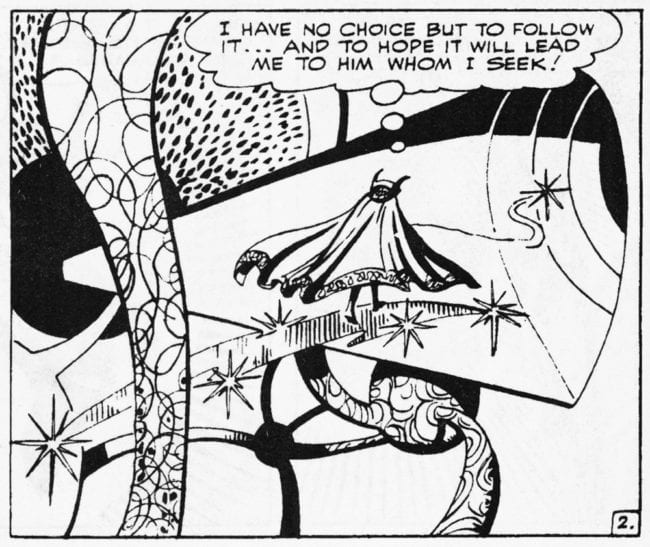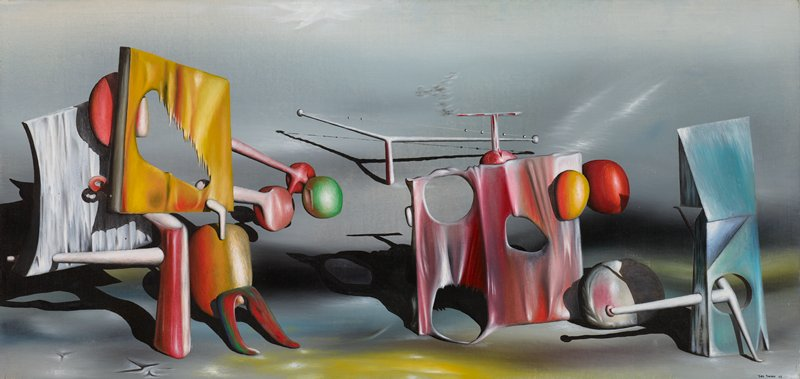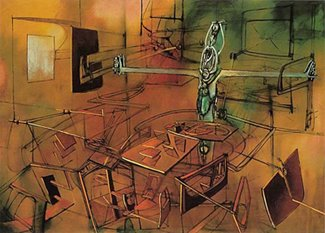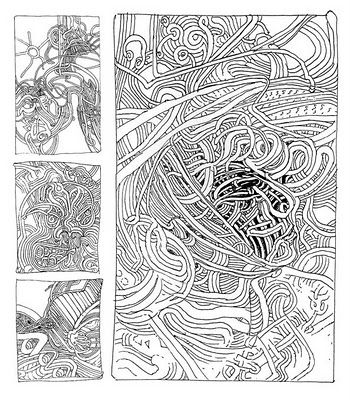Everything in the boy's toy section of the catalogue was presented as a possible addition to my world, however there was nothing grounding any of these items in reality, just a word and a number. Brand names were in particular prominent, Matchbox, Corgi, Dinky, Airfix, all names from the past now, but one's that at the time seemed to promise a boy like me some sort of paradise or escape from the drab reality of 1950s and 60s life in Dudley.
The catalogue by its very name was an extension of a powerful idea, one that was concerned with listing and defining things, presenting the world in a systematic order. You were shown things you could own or possess, a list of objects, nouns, things that were in many ways fantasies, ideas that would for yourself or others give great pleasure if you could possess them. The women in the fashion pages all looked beautiful, the men handsome and the boys and girls were always happy. You were also presented with an exchange system, money for things, and instead of these things being listed as to their direct use value, you were being invited to a future paradise, one where you would magically be handsome, beautiful and happy, so long as you had the thing you saw floating enticingly on the catalogue page, a thing you could exchange for money; but not real money, never-never money. You were never told how the having of any particular item would change things, it was though implied that once you had it, once you possessed the object, (the noun) things would be different.
Years later I would come to recognise this situation as being what Karl Marx called, 'commodity fetishism', a term he appropriated from a 1760s text, 'The Cult of Fetish Gods' by Charles de Brosses, an idea that helped him make sense of what he perceived as a magical quality within commodity exchange. In 'Capital' he wrote, "A commodity appears at first sight an extremely obvious, trivial thing. But its analysis brings out that it is a very strange thing, abounding in metaphysical subtleties and theological niceties". Marx had taken a term from where it was being used to refer to a belief that spiritual power or life energy can be found in inanimate things, specifically a belief in totems. He saw that a belief in invisible lifelike powers existing within inanimate objects was essential to a meaning system that embeds the believer into the wider inanimate world he or she exists within. Marx borrows this concept to make sense of what he terms 'commodity fetishism', the commodity he says remains simple as long as it is tied to a clear use-value. I.e. to assuage hunger, to keep someone warm, to protect you from harm etc. However Marx wasn't so clear about 'use-value' in terms of its more psychological meaning, for instance if something gave you added status, appealed to your vanity, made you feel better in some way or was simply something you didn't have but could now own. Things were Marx believed 'magical', in that if they were not for direct use, they promised 'magical' effects, that were he would argue 'fictional' or of no clear use value, but which nevertheless appeared to be the drivers for possible life changing transformations. Once the system was set in motion and people had enough or believed they had enough disposable money to buy things, the process of commodity fetishism became self fulfilling. People began to believe that you earned money to be able to buy things and that it was things that gave you your worth. Instead of valuing a human life in terms of what someone did, (actions), you valued human lives on what they owned, (things) and the amount of money you had to buy them. The central moment of value exchange was that of labour for money, not a clear use value such as picking fruit in order to be able to eat it, but something far more mysterious, such as working on an assembly line testing springs, in return for an agreed wage. An agreement though that took place without the worker having any idea of the real value of their labour, it being an activity now seemingly divorced from any deep or clear understanding of how this labour fitted into the production system as a whole.
Sorry for the diversion but I needed to establish some sort of personal background against which I could set out how the cataloguing of things, the dissecting into parts of complex interconnected events and the breaking or atomising of these into things, changes how we think. The more a language uses nouns, the more it can be used to catalogue the world as a series of things, its internal structure eventually changing the way we perceive the external world. Eventually what was about doing and engaging becoming about possibilities of ownership. If now we go back to how verbs and nouns are used, I can compare my situation with a boy or girl growing up as part of an indigenous north American Potawatomi community. They would have had a very different set of experiences but ones that are related to how all people and the world are intertwined and I believe linked to structures so deep rooted that they are the reasons why commodity fetishism has taken such a strong hold on our Western society. A hold that can only be explained I feel, because we are hard wired to understand the world in terms of an active inner life force, something that runs through everything; people, animals, trees, flowers, rocks and streams, but that we now only really appreciate this in our unconscious minds; logic and rationality having exterminated something that was vital to our grasp of life.
In 'The Democracy of Species' Robin Wall Kimmerer points out that in Potawatomi the syntax of language is aligned to a very different world view, one where there is a need 'to provide different ways to speak to the living world and the lifeless one.' (2021, p.12.) Robin Wall Kimmerer uses the example of our word 'bay' a noun meaning 'a broad inlet of the sea where the land curves inwards', as a focus around which to explain a very different idea of relationships with other things. In Potawatomi the word for 'bay' is a verb. When the idea of a bay is a noun it is as 'defined by humans', (Ibid, p. 15) it becomes something that can be owned or taken as property. The verb, 'wiikwegamaa', to be a bay, lets it live, it defines itself. The water within it is finding a particular form, it has decided not to be in a stream form or in its full ocean form, these other forms require other verbs, because these things are alive. The Potawatomi language is a reflection of animacy, or 'the life that pulses through all things'. (Ibid, p. 15). This is a language that allows its users to converse with the world on an equal level. As Robin Wall Kimmerer also points out you would not call your grandmother an 'it'. Imagine saying about your gran, "It is getting old." In most North American Indian indigenous languages there are no grammatical gender systems, only differences in animation. For instance hills, mountains, stones, the wind, stories, the sea, fire, trees, places etc. are all animate, so instead of pointing to an apple and asking "What is that?", you would say, "Who is that being?". In English however we are either humans or things, our language divides us from everything else. If we were all people, we would feel very differently about the other people we meet. Say hello to the mountain, acknowledge the rain and speak with the grass. There are no others, we are all one.
Somehow the life that pulses through all things became broken down, catalogued and the subjective experience of this turned into objects in the objective West. However somewhere inside the idea of commodity fetishism is a remaining ghost of a previous relationship we used to have with the world, perhaps this is the real spectre that haunts Europe. The spiritual power or life energy that can be found in all inanimate things still somehow survives, but Marx in recognising it, focused too much on how commodity exchange relies on our collective ability to use that invisible power to build some sort of personal capital and not enough on how we used to recognise energy exchange in a day to day reciprocity with the world that surrounded us. The moment of exchange for Marx became more about an awareness of who was taking what from the exchange, rather than an awareness of the need for reciprocity. In the wider Potawatomi sense of reciprocity, people understood their obligations to the land, to the plants that fed them and the animals they shared the world with.
The only things in the Potawatomi language that are not seen as animate are those seen as extensions of human people, things made by human beings such as a table. They would say, "Table it is". The table is an extension of us, a tool and as such we don't need to negotiate with it and ask its permission for being able to conjoin in its being, it has the respect of being crafted by a human and that is enough. But what about that toy I wanted so much as a boy? On the one hand I never saw it made, I could not give it the respect of coming from another individual human being's effort, even though I am aware that that effort must be in there somewhere. It in effect arrives from 'nowhere', I encounter it as I would a rock or stone, out on the hills, so I ought to treat it as such, as an animate thing of the world, and ask it, "Who is this being?", what relationship do I have with it? We just get things backwards, instead of asking it "what are you offering me?", I should be enquiring, "What sort of relationship could we have?", what interconnectedness is being revealed? Respect is important here, there are human rights, but also animal rights, vegetable rights and in this case mineral rights. The right 'to be' is too often negated within the very languages people speak and by using more event based material languages such as drawing, we perhaps begin to sense the respect we need to offer all doings and not just those that happen to look like or seem to effect just us; and as we do this, to begin to see the nature of the world as a series of events and not lists of things.
So what has all this to do with drawing? Well as I have pointed out before, drawing helps us think and solve problems in ways that words don't always have answers to. By taking one project, The Anti-Extinction Library, perhaps it is easier to explain. I've used the term 'disegno' several times before to cover the idea that artists need to draw to think through their projects.
Drawings made in order to think through the forms that consist of the Anti-Extinction Library
The Anti-Extinction Library is an installation that permanently shelters the embryonic cells and DNA of rare lifeforms, created by artists Mitchell Joachim, Chris Woebken and Oliver Medvedik, the work raises the issue of species biodiversity vanishing at an alarming rate because of climate change and habitat loss. The artists have created a space that safeguards organisms at their earliest and most fundamental state. and it allows anyone to submit suggestions of local species to save. It is a library that has reciprocity as a core principle. The artists state; “Besides being cryogenically preserved, each strand of DNA has an embedded genetic maker that contains the entire “Nature Bill of Rights” modified from the UN documents on human rights. These encoded markers support a narrative that all species are equal and all are necessary to a healthy planet.”
The Anti-Extinction Library
The layers
The library project is complicated and built to last, its external egg type shape designed as a visual metaphor for the nurturing of organic materials. The three artists associated with the concept bring with them a range of skills from an understanding of biodiversity to construction and computer 3D visualisation knowledge. This cooperative effort is typical of contemporary art practices that seek to bring various knowledge forms together, so that change can be effected by deeper collaborative research and the final project is an event rather than something directed at the construction of an art object.
However a project of this complexity can appear daunting, and a far more direct engagement with the world is to look at it, and to commune with it by drawing it.
Sketchbook drawings
A drawing forces you to actually look at something and in doing so you give it your full attention. The bond that this activity constructs between yourself and what is being drawn is a doing thing, an event and as such it is a way to get past nouns and begin the slow journey back to being able to be with the world. One way to begin the process of using more verbs is to go out and walk and look and draw, in this way you begin to act on experiences rather than talk about them.
This week is however another terrible one in relation to how we as a species operate. We have one individual with vast power deciding that a body of land belongs to Russia as opposed to the people that live there. Just as the north American indigenous peoples were removed from their lands by Western Europeans, the people of the Ukraine now find themselves subject to the whims of a stronger military power. I don't think it's about who is right or wrong in these conflicts, you can find arguments on either side,The long term reality is always awful, atrocities often hushed up at the time, the victor always writing the initial accounts of how the war was won. Only much later is the reality revealed, often at a time long enough removed from actions that they are now 'historic', or something to 'get over' and to be put behind us, until of course we are again faced with a similar situation. That's the problem with things; the Ukraine isn't a thing, it isn't something to take, to steal or to control, it is part of a doing, a harvesting of wheat, a breathing of peoples, an ecology of interconnectedness, that if seen as a simple thing, is diminished and in that diminishment care disappears, replaced by ideas of possession, of control and the exercise if power.
See also:







